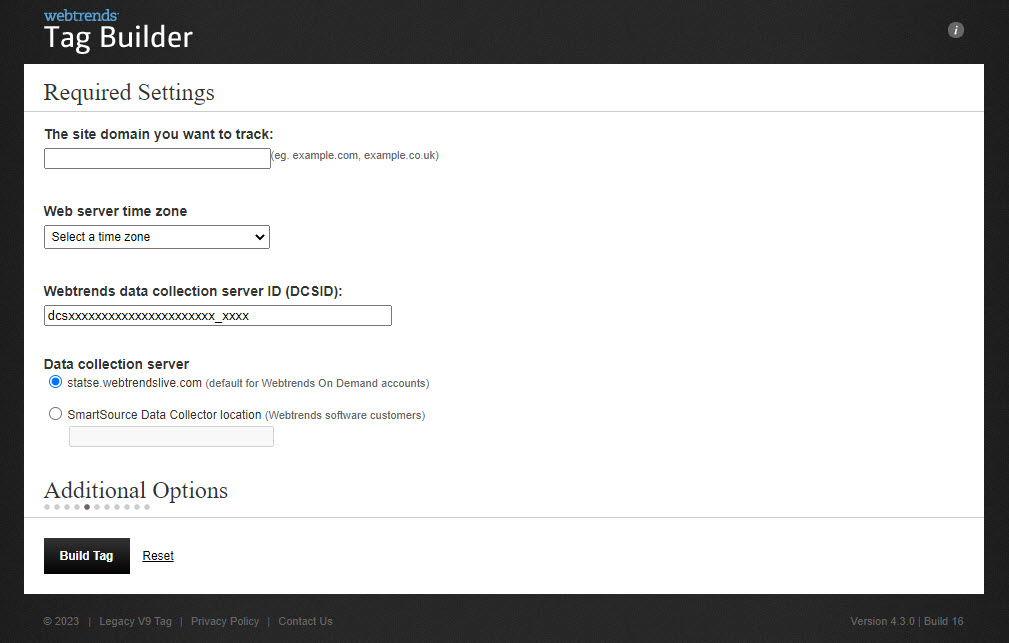The Webtrends JavaScript tag provides a highly customizable integration that allows you to send data to Webtrends every time a significant event occurs on your site. You can start with a basic implementation, which captures page views with very little coding, or you can capture everything from button clicks to video events with a little extra code.
The Smartsource Data Collector
When implementing Webtrends tagging, a Smartsource Data Collector is also required. This dedicated collection server will receive the 1×1 pixel gif request and pull all of the information attached and log it to file. Information on installation and system requirements can be found here.
The benefits of utilizing the Webtrends tag and the Smartsource Data Collector are numerous. The number one reason is the data is cleaner. When utilizing server log files, every single thing that touches the server is recorded. Which means that bots, spiders, internal uptime monitors, and the like will all be clouding the measurements you want to see. Most spiders and bots don’t execute JavaScript code, so by default, the data is cleaner. Server log files, especially Apache, can have out of order records… which can increase the memory requirements (and time) for analysis. Also, server log files are only able to record file interactions. They have no ability to view interactions via JavaScript or pull information from the DOM (Document Object Model).
You may already be using an older version of the Webtrends tag. If so, there are more than a few reasons to upgrade.
The V10 Tag
The v10 tag has many improvements that give it major advantages over the previous releases. Principally, the V10 tag is asynchronous vs the synchronous nature of V9 and previous versions. How does that matter? With the V9 tag, you had to place the include at the bottom of the page, as any delay in the processing of the the gif image (poor network speed, traffic, etc) would cause the page to delay loading until it was finished. The V10 tag is asynchronous, so when placed in the head of the file, it goes about it’s job while allowing the rest of your page and scripts to function.
With the V10 tag there are also much more robust customization options available. You have the ability to utilize a single configuration point for all pages on a site, versus the previous method of having to update each individual page if you want to change a configuration. The asynchronous nature also allows you to create your own plugins that can perform tasks such as gathering additional data to be included with the tracking beacon.
With the V10 tag, there have also been security updates. All traffic on the internet should now be utilizing an SSL certificate. It’s become a must. As such, the V10 tag defaults to utilizing SSL protocols to connect to the SDC and sets the secure flag on cookies where it can.
Although the v10 JavaScript tag has changed significantly from previous releases, upgrades from prior versions are generally easy. To get started, visit our tag builder website and download your copy of the v10 JavaScript tag. If you need help, please contact Webtrends Technical Support!
